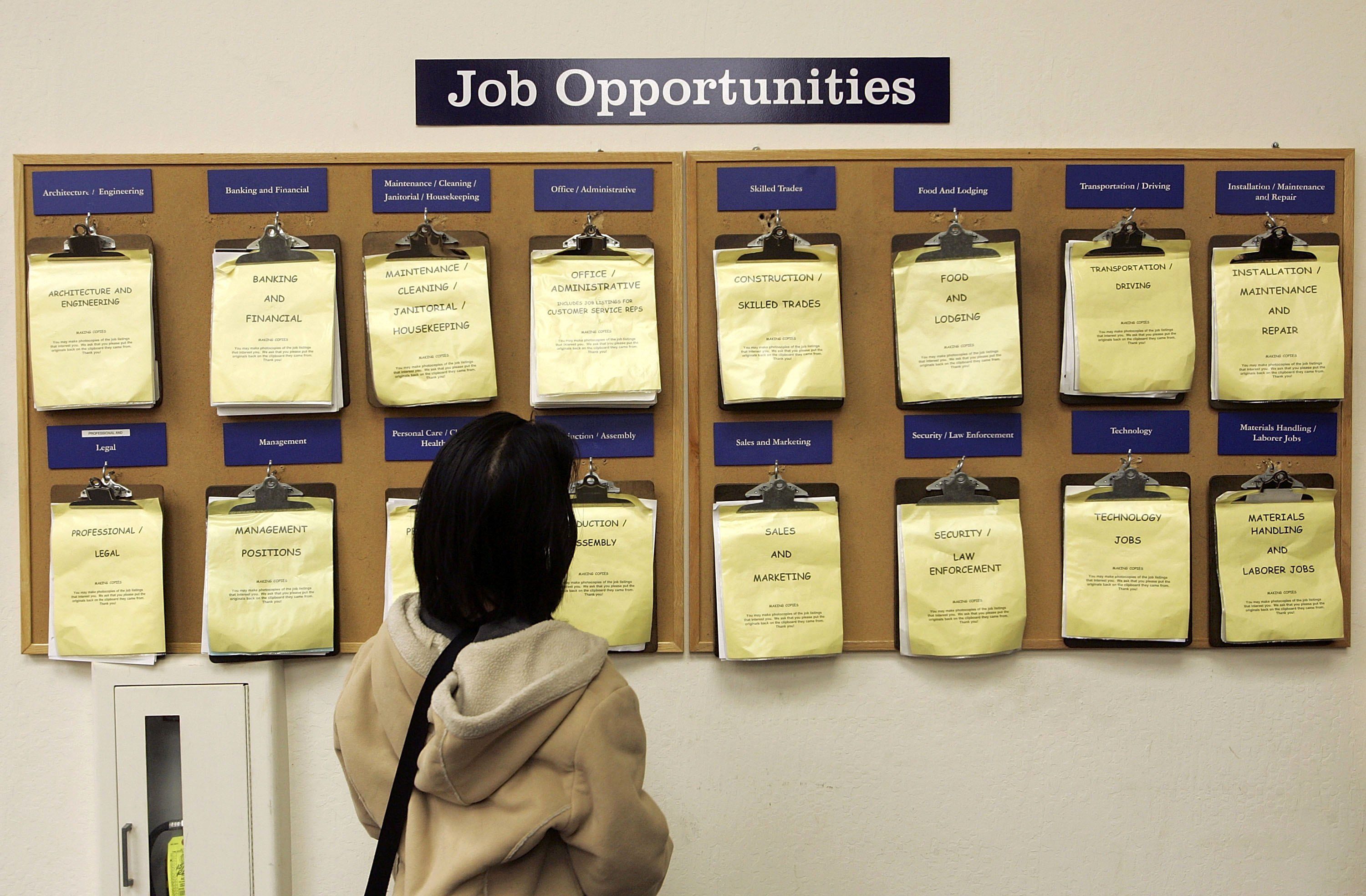We’ve seen a strong start to the week for European markets with the FTSE100 outperforming yesterday due to playing catch-up as result of the gains in the rest of Europe on the Monday Bank Holiday.
US markets also saw a strong session, led by the Nasdaq 100 as yields retreated on the back of a sharp slowdown in US consumer confidence in August, and a fall in the number of vacancies from 9165k to 8827k in July, and the lowest level since March 2021.
The sharp drop in the number of available vacancies in the US helps to increase the probability that the Federal Reserve will be comfortable keeping rates unchanged next month, if as they claim, they are data dependent, and that rates are now close to restrictive territory.
This belief was reflected in a sharp fall in bond yields, as well as a slide in the US dollar, however one should also remember that the number of vacancies is still well above pre-pandemic levels, so while the US labour market is slowing, it still has some way to go before we can expect to see a significant move higher in the unemployment rate.
Today’s ADP jobs report is likely to reflect this resilience, ahead of Friday’s non-farm payrolls report. The ADP report has been the much more resilient report of the two in recent months, adding 324k in July on top of the 455k in June. This resilience is also coming against a backdrop of sticky wages which in the private sector are over double headline CPI.
Nonetheless the direction of travel when it comes to the labour market does suggest that jobs growth is slowing, with expectations for that jobs growth will slow to 195k in August.
We also have the latest iteration of US Q2 GDP which is expected to underline the outperformance of the US economy in the second quarter with a modest improvement to 2.5% from 2.4%, despite a slowdown in personal consumption from 4.2% in Q1 to 1.6%.
More importantly the core PCE price index saw quarterly prices slow from 4.9% in Q1 to 3.8%. The resilience in the Q2 numbers was driven by a rebuilding of inventory levels which declined in Q1. Private domestic investment also rose 5.7%, while an increase in defence spending saw a rise of 2.5%.
Before the release of today’s US numbers, we also have some important numbers out of the UK, with respect to consumer credit and mortgage approvals for July, and Germany flash inflation for August.
Mortgage approvals in June saw a surprise pickup to 54.7k, which may well have been down to a rush to lock in fixed rates before they went higher. July may well see a modest slowdown to about 51k.
Net consumer credit was also resilient in June, jumping to £1.7bn and a 5 year high, raising concerns that consumers were going further into debt to fund lifestyles more suited to a low interest rate environment. This level of credit is unlikely to be sustained and is expected to slow to £1.4bn.
As long as unemployment remains close to historically low levels this probably won’t be too much of a concern, however if it starts to edge higher, or rates stay higher for an extended period of time, we could start to see slowdown in both, as previous interest rate increases start to bite in earnest.
In comments made at the weekend deputy governor of the Bank of England Ben Broadbent said he that interest rates will need to be higher for longer despite recent declines oil and gas prices as well as producer prices. These comments prompted a sharp rise in UK 2 year and 5-year gilt yields yesterday, even as US yields went in the opposite direction. This rise came against a welcome slowdown in the pace of UK shop price inflation which slowed to 6.9% in August.
Headline inflation in Germany is expected to slow to 6.3% from 6.5% in July, however whether that will be enough for Bundesbank head Joachim Nagel to resile from his recent hawkishness is debatable.
As we look towards European session, the continued follow through in the US looks set us up for another positive start for markets in Europe later this morning.
EUR/USD – rebounded off trend line support from the March lows at 1.0780 yesterday. Still feels range bound with resistance at the 1.1030 area, and a break below 1.0750 looking for a move towards the May lows at 1.0630.
GBP/USD – has rebounded from the 1.2545 area, but the rally feels a little half-hearted. We need to push back through the 1.2800 area to diminish downside risk and a move towards 1.2400.
EUR/GBP – the rebound off last week’s 11-month low at 0.8490 has seen a retest and break of the 0.8600 area, however we need to push through resistance at the 0.8620/30 area to signal further gains, towards the 50-day SMA resistance.
USD/JPY – wasn’t able to push through resistance at 147.50 and has slipped back. This remains the key barrier for a move towards 150.00. Support comes in at last week’s lows at 144.50/60.
CMC Markets erbjuder sin tjänst som ”execution only”. Detta material (antingen uttryckt eller inte) är endast för allmän information och tar inte hänsyn till dina personliga omständigheter eller mål. Ingenting i detta material är (eller bör anses vara) finansiella, investeringar eller andra råd som beroende bör läggas på. Inget yttrande i materialet utgör en rekommendation från CMC Markets eller författaren om en viss investering, säkerhet, transaktion eller investeringsstrategi. Detta innehåll har inte skapats i enlighet med de regler som finns för oberoende investeringsrådgivning. Även om vi inte uttryckligen hindras från att handla innan vi har tillhandhållit detta innehåll försöker vi inte dra nytta av det innan det sprids.






